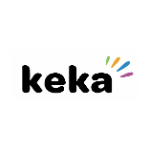TechnologyCounter provides genuine, unbiased real user reviews to help buyers make informed decisions. We may earn a referral fee when you purchase through our links, at no extra cost to you.
List of 15 Best Performance Management System
Showing 1 - 15 of 180 productsAll-In-One HR Platform.36 apps covering all your requirements across core HR, talent management, payroll and business expenses...Read Qandle Reviews
Create quick and reliable 360 evaluations with high completion rates.
Mercer | Mettl 360View is a secure, cloud-based platform designed to streamline the process of administering 360-degree feedback for organizations of any size. Its fully customizable features empower businesses to gather comprehensive feedback for al...Read Mercer Mettl 360View Reviews
Evaluate and appraise employee performance to faster growth. Create a library for future calendar mapping. Compilation of final review data & generation of Appraisal scorecard. Create and Define multiple reviewers and approver workflows for various...Read Spine PMS Reviews
Auvik is a network management tool designed to simplify and streamline the complexities of IT infrastructure management. With its intuitive interface features, Auvik helps businesses effectively monitor, troubleshoot, and secure their networks for ma...Read Auvik Reviews
10to8 is a online scheduling software designed to streamline your business and enhance communication with your clients. With its user-friendly interface and seamless integrations, 10to8 simplifies appointment management, reduces no-shows, and boosts...Read 10to8 Reviews
Snappy is a software designed to streamline your workflows and enhance productivity. With its user-friendly interface is a tools, Snappy offers a seamless experience for individuals and businesses alike. Say goodbye to manual processes and hello to a...Read Snappy Reviews
Synergita, a leading software solution, revolutionizes how organizations manage and develop their workforce. With its user-friendly interface and innovative features, Synergita empowers businesses to effectively track employee performance, set organi...Read Synergita Reviews
Farsight offer Complete Integrated Farsight HCM System which can smooth out the entirety of your HR measures for Increased Efficiency and Profitability at an incredibly moderate cost...Read Farsight HCM Engine Reviews
Impraise is a performance management software that empowers businesses to streamline their feedback and evaluation processes. With its user-friendly interface features, Impraise enables organizations to foster a culture of continuous improvement and...Read Impraise Reviews
Engagedly is a groundbreaking software designed to revolutionize the way you engage with your employees. From goal setting to performance management, our platform offers innovative solutions to enhance productivity and foster a culture of continuous...Read Engagedly Reviews
PeopleApex, is a solution for all your HR needs. With our intuitive and user-friendly software, managing your workforce has never been easier. From recruitment and onboarding to performance evaluations and payroll, weve got you covered. Simplify your...Read PeopleApex Reviews
Trusted by 2500+ customers, Zimyo is a unified HR and payroll software that helps automate tedious HR processes, eliminate payroll errors, and foster positive employee experiences. It offers a comprehensive suite of 50+ modules, including a Core HR,...Read Zimyo Reviews
BatchMaster HeRd is a solution for managing your herd with ease and efficiency. Say goodbye to manual record-keeping and hello to streamlined operations with our innovative software designed specifically for the agriculture industry. Upgrade your far...Read BatchMaster HeRd Reviews
UltiPro is a leading HR and payroll software that streamlines and simplifies important administrative tasks for businesses of all sizes. With its intuitive interface and powerful features, UltiPro provides a seamless experience for managing employee...Read UltiPro Reviews
Keka is a Modern HR and Payroll software for small and medium sized businesses that manage employee engagement, it has time tracking, attendance management, and leave management system...Read Keka HR Reviews
- What is Performance Management System?
- Common Capabilities of Performance Management System
- Who Uses the Performance Management Software?
- Why do you need the Best Performance Management System?
- Types of Buyers for Performance Management System
- Market Trends of Performance Management Software
- Choosing the Best Performance Management System
- What Are the Types of Performance Management Systems?
- Why Performance Management System Is Important?
- Closing Line
What is Performance Management System?
The performance management system refers to the automated solution that helps companies evaluate and compare the employees’ performances. With a premium performance solution in place, companies can track employees’ productivity and ensure that short-term business goals are achieved. In order to take your business to a new height, you need to manage human resources. After all, your employees play an integral part in helping you achieve your long-term business objectives.
What’s the first that crosses your mind when you hear the word ‘performance management? Well, a majority of people will think about the annual performance appraisal. While judging the performance of each employee by the end of every year is important, businesses need to assess the worker’s productivity regularly. The main purpose of using this automated management solution is to align employees’ goals with the company’s objectives.
The responsibility of the HR department isn’t limited to hiring the best talent or onboarding, new employees. In fact, the HR team is supposed to manage human resources by assessing employees' performance and productivity regularly. They also need to generate a comprehensive report based on the assessment.
Common Capabilities of Performance Management System
Simply put, the requirement for top performance management system has changed over the past few years. This means companies need to look for the latest and advanced features in the employee performance monitoring system to make the best of this automated solution.
You need to ensure that the software you choose comes packed with all the features you will need to streamline your employee’s performances as well as reporting tasks. Let’s take a look at some important capabilities of performance management solutions.
-
Goal Setting
The prime function of best performance management software is clarifying the business goals, including the short-term and long-term objectives, to the employees. If there is no clear objective, the manager and human resources won’t be able to assess the performance of an employee.
The goal-setting module in the performance management system enables employees, managers, supervisors, and other business associates to establish their specific goals, monitor the progress, and achieve it in an efficient manner.
It is as simple as adding a new goal, choosing a name, and typing a small description that talks about the purpose of the goal and requirements. You can also mention the due date, i.e. when you must accomplish the goal.
This function allows employees to share their objectives with their co-workers and managers. It acts as the motivational tool that encourages your employees to work harder to reach their set objectives as soon as possible.
-
Data Analytics and Reporting
This tool allows managers to prepare a summary of the performance data. Using the reporting and analytics tool, you can combine the database and gather information about the goals your employees have achieved so far. You can generate the performance reports in graphs and charts. It can be difficult for a company to monitor the progress of each goal manually.
Even if you are using the spreadsheet and other computational tools, you will not get a clear picture of the total progress of your company. Data analytics and reporting, on the other hand, help you track the employee’s progress in terms of goals accomplished. Using these insights, you will know the low-performing employees. You can plan the employee engagement strategies to boost the morale of the employees that are straying from the company’s objectives.
-
Self-Assessment
The self-assessment module enables people working in your firm to evaluate their individual performances based on certain factors. The best part about this feature is that it lets your employees rank themselves for a particular project. This means the workers can rank and review their performance for the project they have completed.
They can also rank themselves on the basis of their contribution to the firm and the accomplished projects. The self assessment software boosts your employees’ morale by allowing them to take a close look at their overall performance and the completed projects.
They can also compare their performance with the set goals. This tool motivates them to perform harder to be able to achieve the next set of objectives in a timely manner. They can use this tool to determine their shortcomings.
-
360 degree or Real-Time Feedback
An important module of the online performance managament system is the 360-degree feedback function. This feature has become quite a popular part of automated performance software. It allows your employees to get a multi-layered response from the manager and employer. Unlike the traditional feedback method, the 360-degree feedback system involves comments from different departments, upper-level, and middle-level employees, and the manager.
This module enables users to drop anonymous feedback on the employee’s performance. It creates an unbiased business structure, in which, each employee gets a real and honest review from different members of the company. This includes the juniors, managers, supervisors, HR team, and co-workers. Moreover, the real-time feedback motivates the peers and managers to share some improvement tips that they might otherwise feel reluctant to mention.
-
Regular Feedback and Training
An ideal performance management system is one that supports coaching and regular feedback. As mentioned before, you need to conduct a regular employee performance assessment. Sending them regular feedback regarding their performance and taking steps to facilitate training are some easy ways to build their skills and improve their performance.
The traditional feedback system no longer works these days. If you want to boost employees’ engagement and motivate them to perform better, you are going to need to embrace the trending performance management system that features the regular feedback and training option. Traditional feedback systems are rigid.
Basically, they involve a paper-based report that’s delivered to each employee at the end of the financial year. While that seems quite easy, it doesn’t help grow your company, neither does it help your employees improve their performance.
Who Uses the Performance Management Software?
The performance management system is mainly purchased and installed by the HR department of a company. The software is designed to streamline a myriad of human resource management tasks. From sending feedback to each employee on a regular basis to tracking their performance, the PMS can handle just about any performance management activity seamlessly.
Modern software systems are not only used by human resources. They are rather designed for the entire team including the business staff, associates, employees, managers, and different departments.
- Employees:
They can even rank their performance. With a self-service performance management system in place, employees can track their performance and know their contribution to the company’s revenue and success in simple clicks. That’s the reason why the software you choose must have easy navigation and a simple user interface so that your employees can access and use it anytime and anywhere they want.
- Managers and HR team:
So, the human resource management team and supervisors are going to use the performance management software for reviewing employee’s productivity levels, performance, skills, and contribution to the company’s growth. Based on these insights, they can post feedback for each employee on a regular basis.
They can also generate reports and analytics from the performance database. This information will help them develop a robust strategy for human resource management.
Why do you need the Best Performance Management System?
We have witnessed a major evolution in technology. Businesses know the importance of staying up-to-date with the latest technology trends so that they are always ahead of their competitors. It is equally important for businesses to adapt to the trending software to streamline the basic and hectic administrative operations.
Evaluating your staff’s productivity and regular performance is important. You can use this solution to track their engagement, productivity, and morale. Based on these insights, you can plan your future marketing and employee engagement strategies. Let’s take a quick look at the reasons you need a best performance management system:
Track Regular Performance
Usually, businesses record employee’s performance on an annual basis. Not only does it have a negative impact on the employees’ morale, but an annual performance appraisal will not help you get the best results. Employees are most likely to be productive when their performance is evaluated and they are offered some exciting rewards every now and then. It builds engagement and encourages your personnel to do their best.
You need an automated system that could help you provide regular feedback to your employees, evaluate their performance, offer rewards, and invite them to offer suggestions. This will keep the manager and HR department up-to-date with the employees’ productivity.
Keep Everyone Connected
If you run a large company with different departments and hundreds of employees, you are going to need an automated solution to streamline communication. It’s the responsibility of the HR team to facilitate smooth and fast communication between different departments. You need to keep each employee up-to-date with the current business plans, development strategies, and regular business objectives.
The changes in business policy and norms can be made anywhere and anytime. Likewise, your employees can access the software to check the latest changes from the comfort of their homes. This especially works when you have purchased a cloud based performance management software. You could also use the software to import the crucial business and performance-related data to the spreadsheet or other tools for faster and easier access.
Provide Real-time Feedback
Gone are the days when employees did not need feedback to perform well. Today, most millennials want regular feedback – be it for the complex project they have accomplished or the feedback concerning the error in their work. Providing regular and real-time feedback to each employee is one important step for building employee engagement.
That’s exactly what employee performance tracking helps you with. It enables the managers to send real-time feedback to each member of the company whenever required. You don’t have to wait for the employee to show up for work or be present in the office for feedback. This automated solution comes packed with a real-time feedback module.
Monitor Employees’ Skills
The online performance management system in hrm helps you monitor the employee’s skills and personal development. The performance of your staff relies on their skills management, engagement, morale, and training. Personal development means that each employee in your company can improve their hard and soft skills. They are given training from time to time. This keeps your employees up-to-date with trending marketing and management solutions.
You can use the personal development module in this automated software to plan the employees’ training. Your employees tend to feel important when a business considers their personal development and future. However, it isn’t that easy for companies to pay attention to the employees’ personal development and career. That’s when the performance appraisal system comes into the picture. It comes with a separate personal development module that’s designed to help companies plan and implement employee training.
Helps you Achieve Business Objectives
The workers in your company have their individual objectives. Your job is to align these goals with the company’s objectives. First of all, businesses need to ensure that each employee knows the final objective of a company. Using the sales performance management software, managers and employees can work together to achieve long-term business goals. The solution enables individuals to track their performance and enter their progress. It also helps them know their contribution to the company’s success.
Reduces Unnecessary Bias
Nothing feels more annoying to employees than the biased treatment. Unfortunately, that is quite common in small and large corporations. With the HR performance management software in place, managers will not reward the employees based on their assumptions. They will rather have a clear picture of each employee's performance, allowing them to provide incentives to the ones that deserve it.
Boost Engagement
Another major advantage of the best performance management systems is that it helps build employee’s engagement with your company. People tend to feel attached to an organization that prioritizes their personal objectives, development, and future. Not only does it improve engagement, but it builds employee morale.
Types of Buyers for Performance Management System
There is no one-size-fits-all solution when it comes to performance management. You are going to need to select a tool that caters to your specific requirements and meets your business standards. Here, are the different types of performance management systems:
-
Enterprise:
If you run a large corporation, then you need to look for an enterprise-level solution that comes packed with a broad range of features. It must also support seamless integration. This is especially necessary if you have a couple of software installed in your firm. For instance, if you have the HR management software, then you will want a performance management system that could be integrated with the HR software for smoother and streamlined performance.
Similarly, you may want to integrate the best performance management system with third-party applications. Besides that, a large company needs additional modules that can provide them with valuable insights and analytics reports. You will probably have to spend extra bucks on upgrading the software or replacing it with the latest version if you choose an outdated model.
-
SMB:
The best performance management software for small business isn’t only recommended for large businesses. In fact, growing companies and even startups with a bunch of employees can use this software to track employees’ performance, manage their skills, and develop the right engagement strategies.
If you own a small business, then scalability is the first thing you need to take into consideration when selecting the performance management system. You can’t settle for an outdated model or the software with the basic functions only. When your company grows and you hire more and more employees, your basic performance management platform won’t be able to cater to all your employee’s requirements.
Market Trends of Performance Management Software
The work environment and the way the basic administrative tasks are carried out in the workplace have evolved over the past few years. A major part of the workforce in almost every company is occupied by Gen-Z people.
Technology trends have changed the way we work. This decade, especially, has brought some exciting and innovative changes in the performance management industry. The employee performance management software industry is expected to reach $5635 million in the coming years. More and more companies (both SMEs and large-scale) are adapting to these trending solutions.
You need to adapt to these trends to reach new heights. Every year, we see new innovations and upgrades in their employee performance management software. That’s the reason why businesses invest in customizable solutions that could be upgraded. The following are some of the main market trends in performance management software.
1. No More Annual Performance Review
Earlier, businesses would generate annual reports of the employees’ performance. However, that era is long gone. The performance management software industry has witnessed several trends in the employee’s feedback reports, such as 360-degree feedback, real-time feedback, training based on the employee’s performance and productivity, and more. Performance management methods have changed.
Regular and real-time feedback has become mainstream. Using the effective and all-featured business performance management system, employers have been able to generate instant feedback.
They can assess the performance of each employee, match it with the company’s and the employee’s individual goals, and provide instant feedback. The 360-degree feedback system is also trending these days. This practice enables the whole staff of the firm and business associates to leave anonymous feedback on the employee’s performance. That way the peers won’t hesitate to suggest some better ways to execute the goals.
The annual report is still generated at the end of the financial year to review the overall performance of an employee and their contribution to the company’s growth. However, businesses are focusing more on regular feedback to improve employee’s performance.
2. Data-driven Employee Performance Management
Reporting and analytics are getting common in the HR space. AI-based analytics is gaining attention through the hr performance management software mainly. The reporting and analytics are used to reduce turnover, improve the employee’s experience, and boost productivity levels.
Do you know the modern online performance management software is capable of making decisions based on the employee’s performance and their contribution to your business? The software can evaluate the productivity and engagement of each employee, compare it with their salaries, and suggest changes in the compensation or their position based on these insights. They consider the profits the employee has generated for the company.
One major benefit of a data-driven employee performance system is that it prevents biased treatments. The software doesn’t evaluate the employee’s performance based on their gender, color, and race. It rather does the calculation using the database. So, the employees that give an excellent performance get the best rewards. The AI-based algorithm is not confined to generating annual performance reports. It can also assist the HR department in making important business decisions.
3. Artificial Intelligence
AI plays an integral part in the top performance management systems. If you are in the software industry, you must know that only the AI-based automated solution can deliver the best results. You can leave all the administrative and forecasting tasks to the software and focus on the pertinent activities.
AI in performance management software can offer recommendations, prediction, forecasting, and analytics. This trending technology can design a personal development and training plan for the employees that are straying from their goals. In fact, Artificial Intelligence has the power to predict when the employee is most likely to quit their job. Based on these insights, you can plan future management strategies.
4. Cloud-based Performance Management Software
In recent years, businesses are deploying performance management software on the cloud. Cloud storage can store a large volume of data efficiently. According to the research, more than 38% of users will use the best performance management software on their smartphones. The cloud based solution allows businesses to sync important data with their emails. Now, you can access the software anytime and anywhere with the login details. You can use your laptop, smartphone, and tablet to get access to the software.
Cloud based performance management software is not only easy to set up, but it has a simple user interface. You can enter data in the software from your office laptop, make edits to this data on your smartphone while traveling, and proofread the documents or send feedback to your employees from your PC at home. All changes you make to the document will automatically be saved. You get to decide who can access the cloud-based performance management software.
5. Self-service Portal for Employees
The performance management system has a simple user interface and smooth navigation. Your employees won’t even need the training to be able to use the software. The self-service portal allows employees to access the software and use it for setting their personal goals, setting a deadline for these objectives, checking the feedback, and more. They only need their login credentials to get access to the talent performance management system. They can also use an app to simplify the goal-setting process.
6. Employees’ Experience
Employees are the most valuable asset of a company. Businesses have finally realized the importance of the human experience. They are implementing strategies and technology to improve the employee’s experience. For many companies, employee satisfaction is as important as customer satisfaction.
Research suggests that employees tend to perform better when the manager considers their personal development and career. Lack of employee satisfaction can result in high turnover.
If you manage to offer personalized services to each employee, there is a good chance they will want to stick around. People quit their jobs if they don’t feel satisfied. Just transferring their monthly payment to their bank will not suffice. Businesses need to consider employee’s experience and their requirements if they want to retain them.
Choosing the Best Performance Management System
In order to keep your employee’s inspiration level high, a company needs to invest in the best software. The right software for your firm is the one that helps you manage employee’s performance efficiently. The growth of the employees is one of the major responsibilities of the company. Just handing them their paycheck will not do.
If you want your employees to give their best performance, then you need to spend some bucks on the latest solutions, such as the right performance management system. So, if you are planning to implement automated performance software in your business, you have come to the right place. We have mentioned a few important factors you must take into account when buying the performance management system.
1. Analyze the Current Challenges
The job of a high-quality and trending performance management system is to help you solve performance-related issues. Sure, the all-inclusive performance software will come packed with multiple modules that can streamline a broad range of tasks.
However, you don’t need to pay extra for the modules you don’t need in the system. It is, therefore, important to identify the current challenges you are facing. You need to look for a solution that can help you overcome those challenges without breaking the bank.
Do you want a best performance management system to streamline the management activities? Or, are you looking for a system to retain your employees and build their trust? Maybe, you need a system that could add some exciting features to your existing performance management process. Simply put, you need to look for a system that could contribute to the success of your company while building employee’s engagement.
2. List the Main Features
Performance management system for small business can vary depending on the vendor. Developers can add only the basic functions or advanced modules in the software. It’s quite natural for beginners to get lost in the plethora of features and modules that the performance management system offers. Here, you must focus on the features your company needs rather than getting overwhelmed by the myriad of functions.
Remember that the Performance management system is designed keeping in mind different types and sizes of companies. If you run a startup or a small-sized company, you don’t need the performance management tools designed for large corporations. This is because you don’t need those add-ons that come packed in it. You can also discuss your business requirements with the vendor to figure out the best modules for your company.
It is important to note the modules you would like to add to the PMS. If you are still having a hard time selecting the best performance management software for your business, talk to the vendors and ask them to mention the functions of each module and how they can help a company grow. Based on this information, you can decide which features you need.
3. Customizable PMS
There is no one-size-fits-all approach when it comes to employee performance tracking systems. Every business has different requirements. A large-scale company has multiple departments and different standards than a small business. So, a reliable solution for your business is one that adapts to your company’s structure.
Once you have discussed your requirements with the developer, the next step is to check whether or not the system you are buying is customizable. Nowadays, vendors offer customizable performance management system. This enables them to add, remove, edit, and update the functions in the system according to the client’s requirements. Companies may want to customize the PMS after implementation. Only a flexible performance management tool can be customized.
4. A User-friendly System
The main purpose of adapting to the latest technology is to make mundane business tasks easier and smoother. So, it makes no sense to invest in a complicated performance management system. You will not want to contact the IT Company every day to fix the regular technical issues. Similarly, you don’t want software with a complex user interface.
When you are shopping for the employees’ performance management system for small companies, look for a system that has a simple user interface. Remember that you are not the only one to use the software. The employees, the HR team, and the office staff will operate the system. The software with a user-friendly interface will allow you to give constant feedback to your employees, analyze their performance, and handle other such operations seamlessly.
5. Easy Integration
Another important function of performance management software is integration. Unless you are a startup, you must already have a large volume of data from your employees. You can’t enter this information manually into the new performance management system. Sometimes, people get so tempted by automation that they neglect this aspect.
If the software you choose for your company doesn’t support integration, you won’t be able to sync the existing database with the system. This means you are going to need to enter this information manually. Imagine how much time it can take for your staff to enter a significant amount of information about your employees in the software.
The existing information isn’t the only thing you will want to sync. As your company grows, you will need a system that can be integrated with third-party apps and different software for a smooth management process. Before making a purchase, make sure that the system you choose supports integration.
5. Budget
Do not hesitate to skip the best and trending performance management system if you don’t have the budget for it. PMS can help boost employee’s engagement and productivity, but it doesn’t have a direct impact on your income. Set your budget and look for a solution that meets both your business requirements and budget.
For example, enterprise-level PMS isn’t an ideal option for a small company. The more modules and functions the software has, the higher it will cost. You don’t want to blow your budgeting on a ridiculously expensive system. However, don’t let budget be the only factor you consider when choosing the right vendor for the performance management tool.
6. Support Service and Training
Training is a must for a company that doesn’t have tech-savvy employees. A reliable vendor is willing to make your paper-to-software transition a smooth process. Besides that, they are ready to offer excellent support. Make sure to discuss the support service, training, and other conditions with the vendor before making a purchase.
What Are the Types of Performance Management Systems?
Performance management systems are essential tools for organizations to ensure that their employees' work aligns with the company's goals. Here are the main types of performance management systems:
1. Traditional Performance Appraisal System
This is the most common and traditional method where employees are evaluated annually or semi-annually. Supervisors assess performance against pre-set objectives, often using rating scales.
While straightforward, it may not be timely enough to address ongoing performance issues or recognize achievements.
2. 360-Degree Feedback System
This system gathers feedback from multiple sources, including peers, subordinates, supervisors, and sometimes even customers. It provides a comprehensive view of an employee's performance, focusing on various competencies and behaviors.
This holistic approach can be more insightful but also more time-consuming and complex to administer.
3. Management by Objectives (MBO)
In this approach, employees and managers collaboratively set specific, measurable goals. Performance is evaluated based on the achievement of these goals.
MBO promotes alignment with company objectives and encourages goal-oriented performance but requires clear and achievable goal-setting.
4. Competency-Based Performance Management
This system evaluates employees based on predefined competencies necessary for their roles. Competencies might include skills, behaviors, and knowledge areas.
It helps in identifying specific strengths and development areas, aiding in personal and professional growth. However, defining and measuring competencies can be subjective and challenging.
5. Continuous Performance Management
Unlike traditional systems, continuous performance management involves regular check-ins and feedback sessions between employees and managers throughout the year.
This ongoing process ensures real-time feedback and quicker adjustments, fostering continuous improvement and development.
6. Balanced Scorecard
This strategic management tool evaluates performance from multiple perspectives: financial, customer, internal processes, and learning & growth.
By linking performance to strategic objectives, it provides a balanced view of organizational and individual performance. However, it requires careful implementation and alignment with strategic goals.
7. OKR (Objectives and Key Results)
OKR is a popular framework where high-level objectives are set, and specific key results are defined to measure progress towards these objectives. This method promotes transparency, alignment, and agility, allowing for quick adjustments.
It's widely used in tech companies but can be challenging to implement effectively without clear guidance and regular tracking.
8. Project-Based Evaluations
In project-based organizations, performance is often evaluated at the completion of projects. This approach focuses on the delivery of project outcomes and contributions to project success.
It is particularly relevant for roles heavily involved in project work but may overlook ongoing, non-project-related contributions.
9. Hybrid Systems
Many organizations adopt a hybrid approach, combining elements from various systems to best suit their needs.
For instance, they might use continuous feedback mechanisms along with annual appraisals and 360-degree feedback to get a well-rounded view of performance.
Choosing the right performance management system depends on your organization's goals, culture, and the nature of the work. An effective system aligns employee performance with company objectives, provides timely and constructive feedback, and supports employee development and engagement.
Why Performance Management System Is Important?
A performance management system is crucial for organizations of all sizes and industries. Here's why it's important:
1. Alignment with Organizational Goals
A performance management tools helps ensure that individual and team objectives align with the overall goals of the organization. This alignment ensures that everyone is working towards the same outcomes, enhancing overall productivity and effectiveness.
2. Enhanced Employee Performance
Regular feedback and evaluations help employees understand their strengths and areas for improvement. This continuous feedback loop encourages employees to perform better and develop their skills, leading to higher productivity and job satisfaction.
3. Clear Expectations
A well-implemented performance management system sets clear expectations for employees regarding their roles, responsibilities, and performance standards. This clarity reduces misunderstandings and helps employees focus on what’s important.
4. Employee Development
By identifying skill gaps and areas for improvement, a performance management system aids in the creation of personalized development plans. This targeted approach to employee development fosters growth and career advancement, leading to a more skilled and motivated workforce.
5. Improved Communication
Regular performance discussions between managers and employees improve communication and build stronger working relationships. Open communication channels help address issues promptly and create a culture of transparency and trust.
6. Motivation and Engagement
Recognition of achievements and constructive feedback can significantly boost employee morale and engagement. When employees feel valued and see a clear path for growth, they are more likely to be motivated and committed to their work.
7. Data-Driven Decisions
A performance management software provides valuable data on employee performance, which can be used to make informed decisions about promotions, rewards, and succession planning. This data-driven approach ensures fairness and objectivity in management decisions.
8. Increased Accountability
A structured performance management process holds employees accountable for their performance. This accountability encourages employees to take ownership of their work and strive to meet or exceed expectations.
9. Identification of High Performers
A performance management system helps identify high-performing employees who can be groomed for leadership roles. Recognizing and nurturing top talent is essential for building a strong leadership pipeline and ensuring the long-term success of the organization.
10. Support for Organizational Change
During times of change, a performance management system provides a framework for managing transitions smoothly. It helps communicate new expectations, monitor progress, and support employees as they adapt to new roles or processes.
11. Legal Compliance
Maintaining comprehensive records of performance evaluations and feedback can protect organizations from potential legal disputes related to employment decisions. A well-documented performance management process ensures that decisions are based on objective criteria and performance data.
A performance management system is a critical tool for driving organizational success. It aligns individual efforts with strategic goals, enhances communication, supports employee development, and fosters a culture of continuous improvement and accountability. By investing in a robust performance management system, organizations can build a motivated, skilled, and high-performing workforce.
Closing Line
Evaluating employees’ performance and offering instant and real-time feedback has become the crucial performance management standards these days. Employees expect the manager to implement innovative solutions that could boost their engagement, instead of handing them an annual report that mentions their overall performance. That’s why high-quality performance system is a must in all sizes and types of companies.

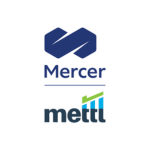
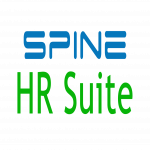
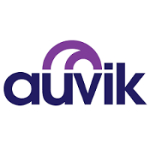







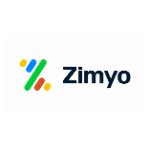

.png)
